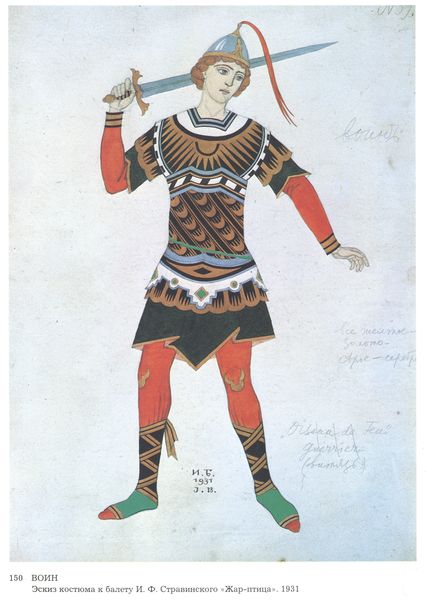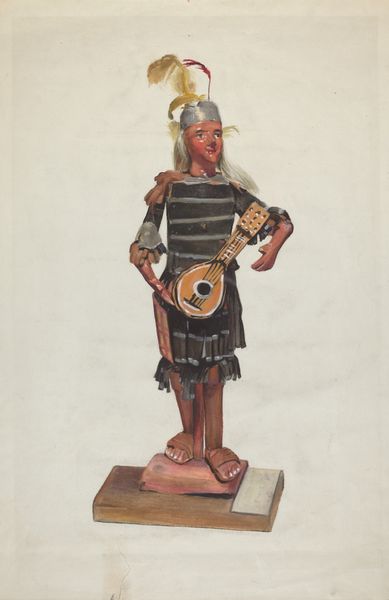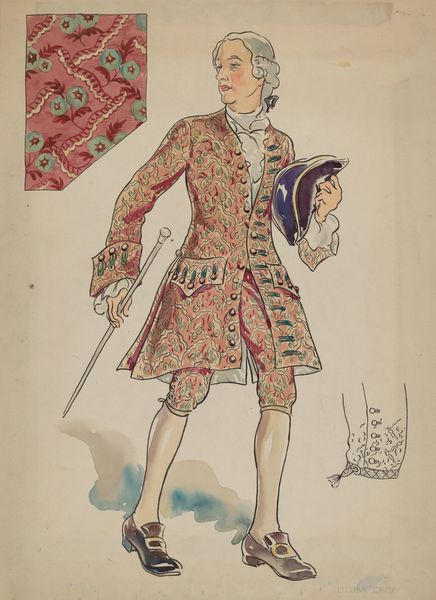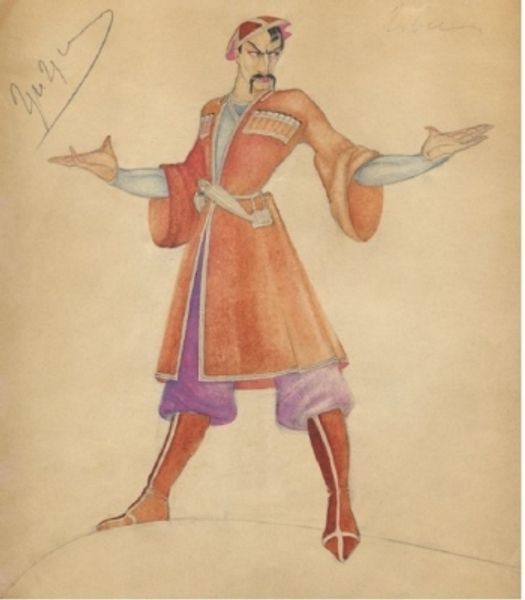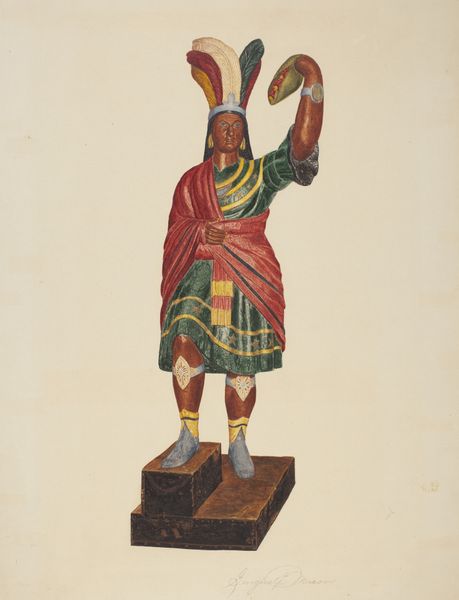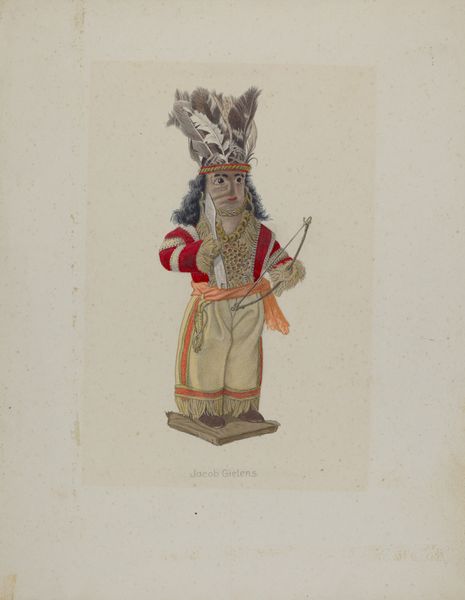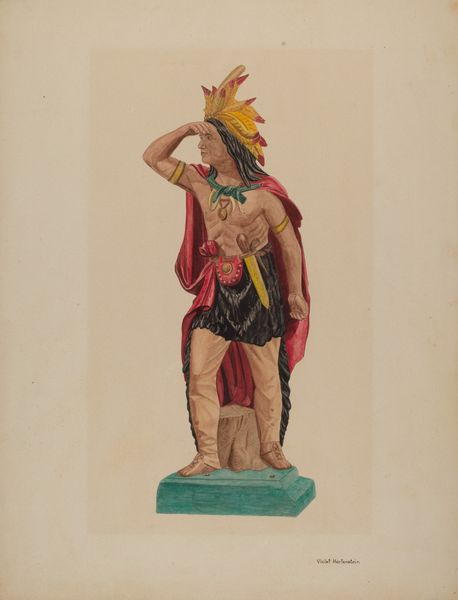
Costume design for the Opera "Legend of the Invisible City of Kitezh and Maiden Fevronia" by Nikolai Rimsky-Korsakov 1934
0:00
0:00
Copyright: Public domain
Editor: This costume design from 1934, created with watercolor by Ivan Bilibin for Rimsky-Korsakov’s opera, "The Legend of the Invisible City of Kitezh," is captivating! The colors are bright, and the details seem to reference traditional Russian folk art. What jumps out at you? Curator: The image resonates deeply with symbols of a mythologized Russia, doesn't it? The stylized floral patterns, for instance, they echo traditional embroidery. And that horn he’s blowing. Does it signal an alarm, or a call to some ancient ritual? It speaks to a collective memory. Consider the period – 1934. Socialist Realism was ascendant. Bilibin creates, instead, an idealized, almost pagan, past. Why do you think he's drawn to these symbols, and this subject matter? Editor: Perhaps to connect to something authentic, a pure idea of Russia that pre-dates political turmoil? Curator: Exactly. These designs create a stage, literally and figuratively, for revisiting Russia’s soul, using folk tales to access cultural archetypes. His color choices, and line work serve to emphasize that effect. Do you agree? Editor: Absolutely! It’s as if he’s trying to preserve something precious. The image definitely conjures a sense of longing for an irretrievable past. Curator: He's tapping into a shared cultural wellspring, an Edenic memory of what Russia *could* be. A powerful use of iconography in the face of radical societal change. I never quite appreciated the depth until now. Thanks for that! Editor: Me too. This opened my eyes to layers of meaning I wouldn't have seen on my own.
Comments
No comments
Be the first to comment and join the conversation on the ultimate creative platform.
